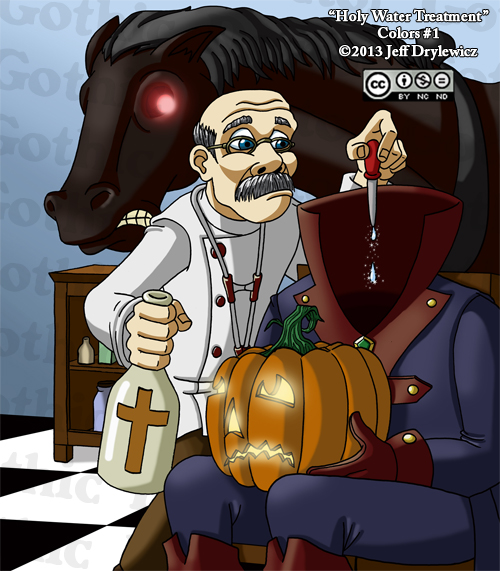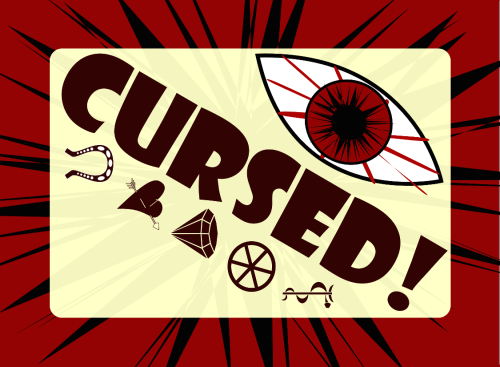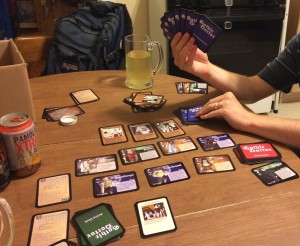Gothic Doctor Game Review

We recently got a chance to play an advance copy of Gothic Doctor from Meltdown Games (we received a copy of the game, no other compensation). Their kickstarter will go live on July 1st. Follow this link to their Kickstarter preview page and you can get notified as soon as they launch.
One Sentence Review
The Gothic Doctor is a hand-management/set-collection card game with an engaging theme for those times when you want something you can sink your teeth into (HA!), but that won’t take all night.
Game Summary
The first thing that will hit you about Gothic Doctor is the whole monster doctor theme. Everything is well tied in with nineteenth century monsters and related villains (e.g. vampires, werewolves, and mad scientists) and feasible treatments for their “ailments” (laudanum, holy water, and the like). Each doctor gets paid for curing patients, with more money rewarded for patients who require more simultaneous treatments (treatment cost ranges from two to four cards per patient). The doctor with the most money after 11 rounds wins. The game is played entirely with cards:
There are a number of gameplay videos on the Kickstarter page if you want to see Gothic Doctor in action. The basics are that each player has a hand of up to seven cards, mostly treatments and possibly a couple action cards. Each turn, you can try to treat one patient from the waiting room with a combination of cards from your hand. You then redraw to fill your hand back up, with doctors who did not treat a patient in the current round getting extra draws and discarding back down.
The Details
The Gothic theme is nicely woven throughout the game. While most of the patients are generic stereotypes, there are a number of legendary patients (e.g. Count Dracula and Frankenstein’s monster) based on the literature of the period. We had to look up Bertha Mason (the name didn’t register, but ‘crazy lady from Jayne Eyre’ likely would have worked) and the demon Ornias, since the game piqued our curiosity and we recognized the others. The treatments are woven in nicely, with some truly considered treatments at one time, like realigning the humours, and others being unique to the monster-curing specialty, like fang removal. The treatment card artwork is a bit more cartoonish, though still fitting with the theme, while the patient art is a bit more gruesome. The suggested age of 12+ is appropriate.
One of the tensions in the draw phase of each turn is whether to fill up on treatment cards or also grab an action card. We found the action cards came out in force about midway through the game and we focused on the “take that” cards that knocked our opponents down, rather than the ones that helped out or randomized the gameplay. This is a great dynamic that we enjoyed; it added a bit more thought to the draw phase and it also acted to keep the leader in check through direct action (rather than trying to guess which patient someone is aiming to treat on their next turn and grabbing it first).
An element that isn’t often found in similar games is a time limit in the number of turns, rather than waiting for decks to run out or someone to pass a threshold. This makes the decision of whether to treat now or pass and hope to treat for more money the next turn really crucial. The first time through, this didn’t fully register until we approached the end game, but you do need to keep that limit in mind starting from the beginning if you want to make a good showing against experienced players.
While most of the mechanics are straightforward and easy to follow, there are two that were not intuitive to us. A small one is the way specialty bonuses are chosen. For each game, two specialty bonuses are determined by the first two patient cards turned over (a specialty bonus is when you treat 3+ patients of the same type you get some extra cash). Since the cards required for those bonuses may not show up after that first draw, this felt a bit off to us, but wasn’t a huge issue and the generalist bonus (treat at least one of each type of patient) made a lot of sense.
The second aspect that caused us some difficulty throughout the game was determining how many cards each person should draw/have. We like the idea that a doctor who doesn’t treat this round gets to take a few extra cards and discard back down to his limit, but the details were a bit tough to follow. Most draw actions only cost one draw, but some cost two. The result is that you need to calculate how many draws you are allowed this turn and take whatever series of actions you like that use up those points. Most of the time, you’ll wind up with a hand size of seven (the original hand), but sometimes you’ll have fewer. This means that any time you have one of those “Wait, did I draw at the end of my last turn?” moments, you cannot tell just by looking at your hand. We’re not sure of the best way around this, since we like the extra options you get when drawing more cards when you didn’t get to treat someone this turn. It is important enough to keep in the game as-is if necessary, but since the complication is in the accounting, and not the strategy, we’d like to see it a bit more streamlined.
The Beer Scale
Gothic Doctor rates a Fuller’s London Porter. It’s got a heavy emphasis on style and theme with a broad appeal to both novices and the more experienced.


Leave a Reply